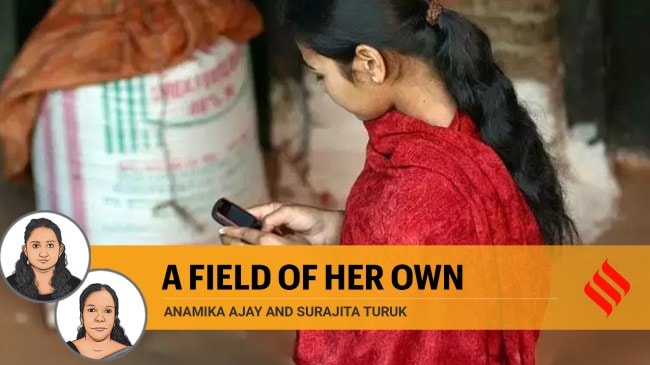Opinion Technologies that give women a say on farms
Small interventions and access to digital technologies have brought about far-reaching impacts
 Small interventions and access to digital technologies have brought about far-reaching impacts on how small-scale fish workers relate to their work.
Small interventions and access to digital technologies have brought about far-reaching impacts on how small-scale fish workers relate to their work. National statistics confirm that India’s agri-food systems, comprising agriculture, livestock rearing, agroforestry and fisheries depend heavily on women’s paid and unpaid labour. Yet, women’s productivity is affected by institutions that place constraints on their time, impose controls over productive resources, restrict access to inputs and scientific knowledge and undermine their decision-making capacities. Gender intersects with other structures of power like caste and class to shape ways in which labour and power are divided between men and women. Women are typically assigned tasks that are labour-intensive, low-paying, and invisible. Evidence shows most technological interventions in the sector have focused only on increasing men’s work efficiency and productivity. In fact, mechanisation has led to women losing their paid work in these sectors. When technologies are designed to reduce women’s workload, it leads to an increase in their productivity.
In the last decade, the M S Swaminathan Research Foundation has been working on enabling women farmers and fish workers access technologies that not only close the gender divide but also have significant impacts on women’s productivity, decision-making and control over their time. For instance, it has been working closely with the indigenous communities of Koraput district in Odisha to revive small millet cultivation as a solution to the food and nutrition insecurity in the region. Small millet cultivation in this region is heavily gendered, with men dominating almost all the decisions related to division of work, distribution of resources, access to technology and financial allocations. Women are assigned the most low-value work.
Tractors are seen as a symbol of masculine power, and studies show how pieces of farm machinery are appropriated by men to reaffirm their masculine dominance. Investments in technologies that ease women’s work are not considered important at the household level. Tasks like manual weeding, threshing, de-hulling and pulverising, which are extremely time-consuming and physically strenuous, are traditionally assigned to women. But with small interventions like enabling women’s access to information, technologies, and machinery and training them to develop skills to use them, women are breaking patriarchal stereotypes.
Women have fought similar battles in the fisheries sectors too. They faced numerous setbacks with the shift to large mechanised vessels and trawlers and the creation of new centralised harbours and landing centres that are located far away from their villages. While opportunities for men to harvest and earn more increased, women were left to struggle in strenuous activities like processing, drying and vending.
Due to the increased presence of large buyers and export traders in these harbours, small-scale women vendors have been marginalised as auctioneers and fish vendors. For a fish vendor, poor access to fish can spell disaster. Even when they manage to buy a small quantity, street vendors don’t make more than Rs 800/day, a major share of which goes to cover their commute and debts. A major constraint for the women was their poor access to information — about fish availability, potential markets for their fish and more generally about more convenient business models.
Enabling women fish workers with digital technologies has brought about impressive changes in women’s work. MSSRF has provided low-income women fish workers in the coastal districts of Nagapattinam, Mayiladuthurai, Cuddalore and Ramanathapuram in Tamil Nadu with access to mobile phones, tablets, helplines and audio advisories, and trained them in internet use, digital payments, inventory management and online business.
These small interventions and access to digital technologies have brought about a far-reaching impact on how small-scale fish workers relate to their work. They can navigate various structural challenges and are more resilient to the vulnerabilities induced by larger transformations in the economy as well as to serious ecological challenges.
While it is true that gender-responsive technologies can strengthen women’s ability to break down entrenched barriers and give them the freedom to make choices, let us also not underestimate the resilience of patriarchy. Investments in designing gender-responsive technologies then need to be accompanied by an enabling ecosystem that holds men, families, communities, the market and the state accountable.
Ajay is principal scientist and Turuk is development associate, gender, MSSRF






